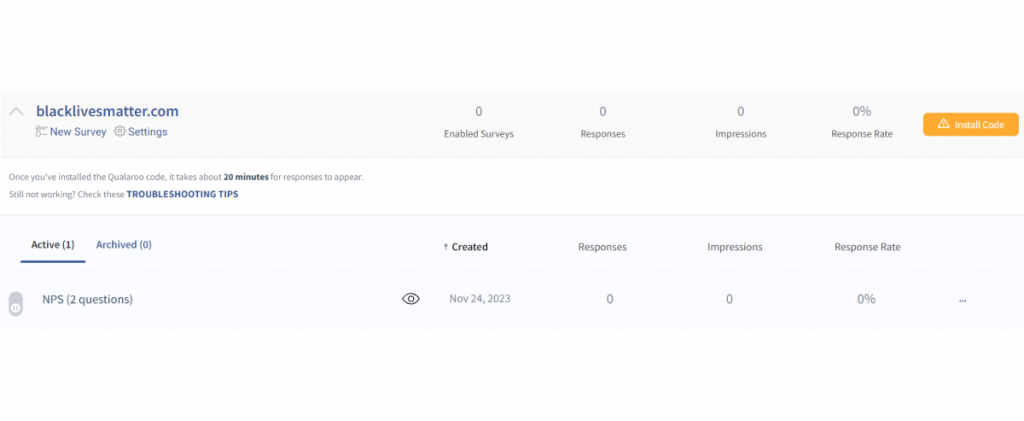Written and contributed by Angela Bartels, VP of Marketing at Qualaroo
When understanding your web traffic in tools such as Google Analytics, there will always be that “I don’t know where this user came from” channel known as “Direct Traffic.”
Direct traffic is identified by those that land directly on your website by typing the URL into their browser or by saving your web URL as a bookmark.
One way to be categorized under “Direct traffic”
As a marketer that likes to track everything, direct traffic is like a fly on the wall – super annoying.
It’s particularly annoying when running paid marketing campaigns because you’ll always wonder how many people were actually influenced by your ad and went on to type your domain name into a browser. Of course there’s view through conversion tracking but it won’t paint a clear picture from source to user.
When we turned on some new paid campaigns earlier this year, I was curious to know more about the users coming into my direct channel so I set out to find out and wanted to share my process and results.
Before I do, it’s important to ensure you’ve already taken the steps to debunk direct traffic and document attribution where possible by:
-
Ensuring you have tracking codes on all your landing pages.
-
Our website is built on WordPress but I build landing pages all the time in Instapage
-
Have a landing page checklist that includes “add tracking code” onto your page is crucial as you build your marketing campaigns. It’s easy for things to get missed if not
-
Make sure you first have tags set up in Google Tag Manager and then set up conversion tracking on your landing pages. Here’s an article on how to do it Instapage
-
-
Using 301 redirects to map old URLs to new URLs when doing a website revamp.
-
We did a website update back in December and we have a lot of pages that are highly ranked so wanted to make sure old pages mapped to new pages in our new URL tree map
-
You can easily do redirects in a CMS tool like WordPress
-
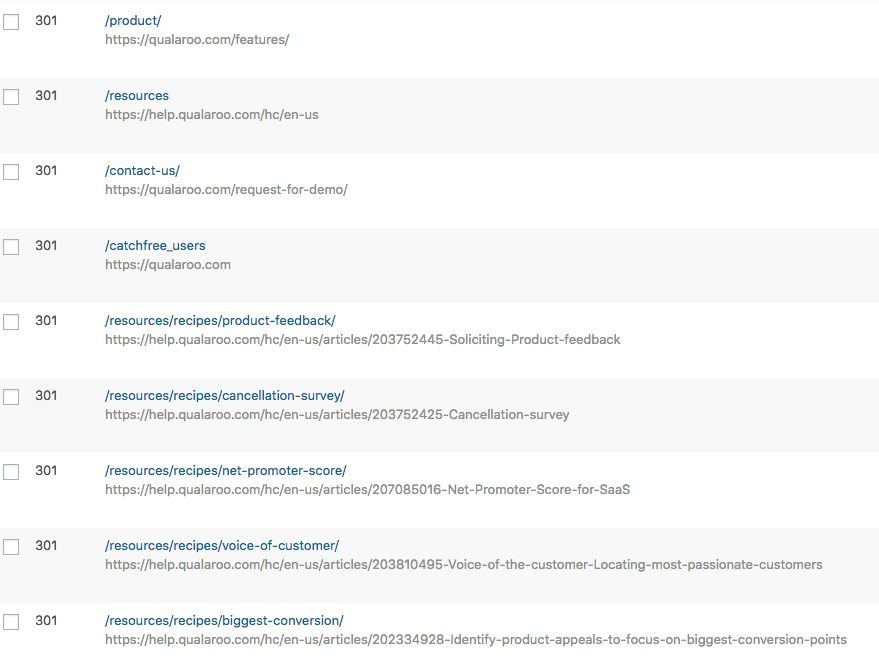
-
-
Setting up proper campaign tracking.
-
This is a no brainer but make sure you have UTM codes set up for all your campaigns running whether paid search, content marketing, email marketing – all your URLs should be tagged with their UTM source, medium, content
-
Here’s an overview on how to set up proper UTM tracking.
-
For a deep dive into understanding direct traffic, check out this post on the Moz blog.
Assuming you’ve done what you can to debunk direct traffic, you probably still have a good percentage of traffic within your direct traffic channel. If you have a user dashboard or portal that lives on your main domain name, make sure to omit that traffic from the data that you analyze. For example, our users log into app.qualaroo.com so my segments exclude traffic that lands directly into app.qualaroo.com or lands directly on our homepage and clicks “log in” as their first interaction with our site.
Ok, now let’s get into the fun stuff.
After I’ve done everything to ensure I’ve narrowed my direct channel to the smallest percentage it could be, I wanted to understand where the remainder of the users in this channel were coming from.
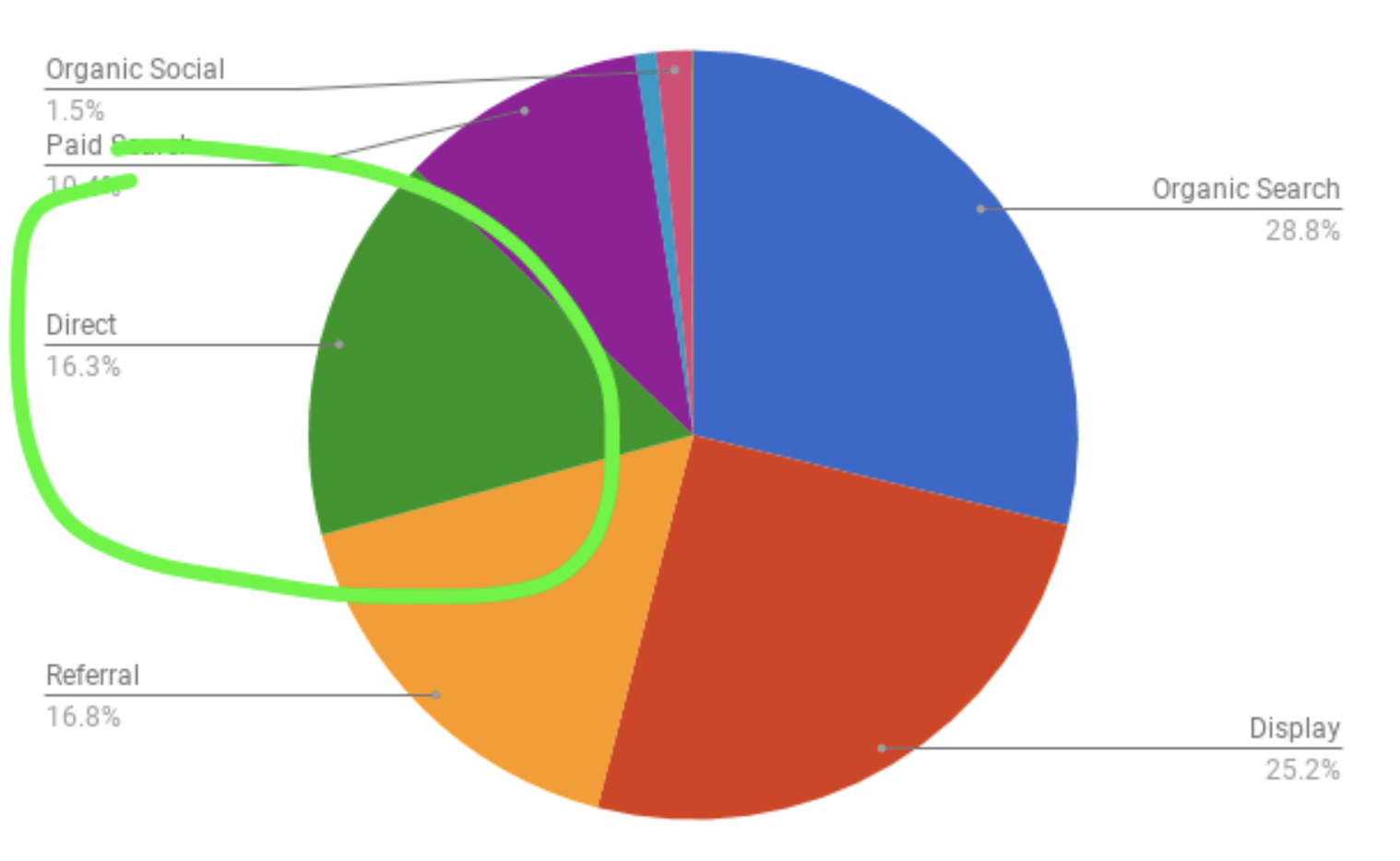
Just in case you’re worried on whether or not you’re tracking your campaigns correctly, the best way to find out is to see which landing pages your “other” channel visitors are landing on. If you are promoting a landing page for a campaign that is not in your navigation, you’ll be able to quickly see if users are landing on this page as an entry point and can quickly allocate them to the correct paid marketing channel.
Why not just ask users from your Direct Channel where they came from?
I ran a Qualaroo onsite survey targeted only to users that came in directly to our website. I designed the survey questions around what I thought might be how they found our website and I left an open ended question to allow users to give us the answers.
Here’s what I came up with:

For each question, I had a follow-up question:
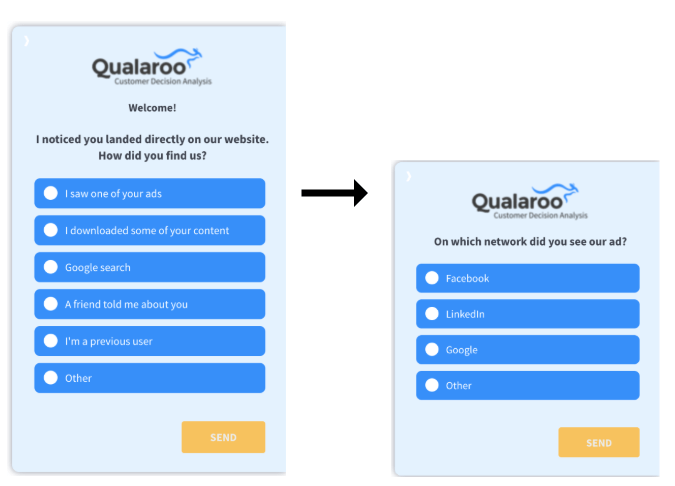
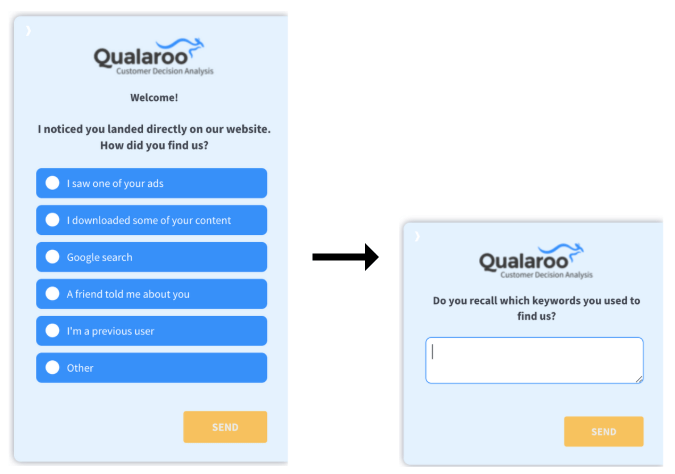
I ran the survey for 30 days and received a 10% response rate out of 3K views.
Here’s a snapshot of what the data told us:

As you can see from the data, 10% were influenced by an ad and 2% downloaded our content. With a 10% response rate over the course of 30 days, we could assume that had 100% of the visitors responded to this survey, the allocations would remain pretty consistent with these percentages.
Of those that said they were influenced by an ad, I was able to see which network they came in from. I can then take these percentages and re-allocate them into our channel overview percentages. For anyone that selected LinkedIn or Facebook, I would add them to our Paid Social channel. We’re only running ads to promote content so it was important to me to figure out what which channels were more accurately promoting paid content.
FREE. All Features. FOREVER!
Try our Forever FREE account with all premium features!
What has the data encouraged us to activate on?
-
Paid marketing. Give paid marketing credit for a percentage of the unknown traffic coming in to justify the spend.
-
Increase spend. Content marketing is working, increase spend there.
-
Previous users. Add a follow up call-to-action for previous users with a “thank you for returning, here’s your discount code”
-
Referral program. Start working on a referral program for those that were referred by a friend. Have a follow up with “here’s your discount code.”
The biggest takeaway here is to realize how much your paid marketing efforts are actually having an affect on all incoming traffic and see new opportunities for growth that you wouldn’t have realized before.
FREE. All Features. FOREVER!
Try our Forever FREE account with all premium features!

 We'd love your feedback!
We'd love your feedback! Thanks for your feedback!
Thanks for your feedback!






